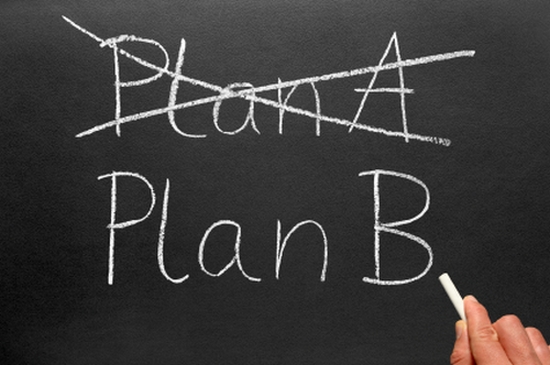Candy Adams

Candy Adams, aka “The Booth Mom®,” is a hands-on trade show exhibit project manager and trainer. She helps exhibitors maximize the return on their exhibit investment using the best strategic, tactical and training practices.

No. 1: Always have a “Plan B”
One of the questions I’m often asked as a trade show industry veteran is, “What do you wish you’d known back in your first year of managing trade show exhibits that you know now?” To answer this question, here is the first in a series of posts addressing the most important lessons I’ve learned, mostly as a lifelong student of the University of Hard Knocks.
If you’ve ever heard of Murphy’s Law (“Anything that can go wrong, will go wrong”), I can tell you that I think Murphy was an optimist when it comes to trade show exhibiting. In addition to having a “Plan B” just in case something goes wrong, you may also need a “Plan C.”

Since most of our co-workers (and some of our bosses and clients) don’t understand what we really do on the show floor, I wrote “Adams’ Law of Exhibiting.” I framed it to hang in my office after a couple of years of exhibiting – and too many run-ins with Murphy:
If ANYTHING goes wrong at a trade show
The problem will appear at the LAST moment
In a FAR-AWAY city
With an UNYIELDING union environment
On a weekend when your exhibit house is CLOSED
With a widget SPECIFIC ONLY to your booth
When you DON’T have a rent-a-car
and
Your credit card is MAXED to the limit!
Yes, Murphy is alive and well – and still resides at every exhibit hall where I’ve ever exhibited at a trade show. But having a Plan B (or C) in place allows me to break Murphy’s Law with impunity.
Regardless of how well we plan our exhibits, communicate with our stakeholders and vendors in writing, and implement the thousand details associated with every show, there are too many unknowns – too many players, too many glitches and too many gotchas – to have everything run 100 percent of the way we originally planned it.
The biggest unknowns are what will happen to mess up your best-laid plans and when. Will you get to the show and find your exhibit is missing in transit, irreparably damaged or lacking critical parts? What if a forklift skewered your graphics crates and the forklift driver covered the holes with “FRAGILE” labels but you didn’t find out until the night before show opening that your graphics look like Swiss cheese? Will one of your most knowledgeable exhibit staff who’s to do in-booth presentations come down with a strange malady at the last minute? Or will you need the services of a local bail bondsman to spring your I & D lead out of jail?
Don’t laugh – all of these have happened to me!
So, plan ahead. Remember that hope is not a strategy! Be a “Master of Disaster!” Try to visualize every, “OMG… now what?” moment that you can imagine.
Have everyone’s phone numbers you can think of programmed into your cell phone. Double-check the manifest of what was shipped by your exhibit house. Have access to the files of all of your exhibit graphics. Pack an extra set (or two) of full-sized, readable blueprints. Have copies of all your pre-show service orders and confirmations. Make sure you have weekend phone numbers of your transportation agent and exhibit house account executive (AE) – and that they will answer their phone on weekends and evenings if you need them. Verify that all of your freight has arrived when it’s supposed to. Reconfirm your onsite labor orders. Measure the placement of any under-carpet wiring twice to make sure it’s where it’s supposed to be and with enough above-carpet cable to reach what it needs to.
Then do a mental walk-through of the options you’d have if your exhibit didn’t show up at a show. If you’ve ever heard the saying, “The worst show is a NO SHOW,” sitting alone in your empty concrete booth space while praying to the freight gods for a revelation of where your freight might be hiding, this experience will give it new meaning.
Could you rent an exhibit from the General Services Contractor? Do you know the name and phone number of a local distributor for your system exhibit that’s sold nationwide who might be able to cobble together an exhibit for you? Do you have all of your graphics on a thumb drive, on your laptop or accessible for download from “the cloud” in case they’re damaged or there’s a last-minute change? What exhibit properties, graphics and equipment could you borrow from a local distributor?
And if you think lost freight can’t happen to you – guess again! Freight gets misdirected, loses its labels and is stuck in godforsaken places based on truck and airline mechanical failures more frequently than carriers would lead you to believe (and any carrier who says they’ve NEVER lost any freight is a liar!).
Be smart. And be ready – with a solid “Plan B” for every show (and having a “Plan C” isn’t a bad idea either!).

Comments
Thanks for that advice and…
Thanks for that advice and for sharing those tips Candy. That comment about those unexpected events really was an eye opener because they are usually so off a person's radar you don't contemplate them happening.
Add new comment